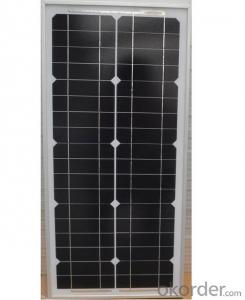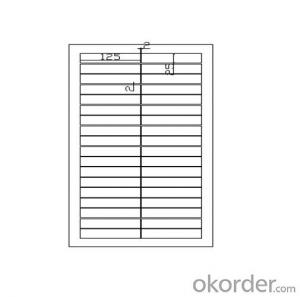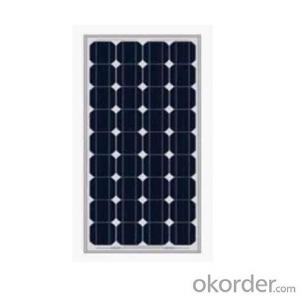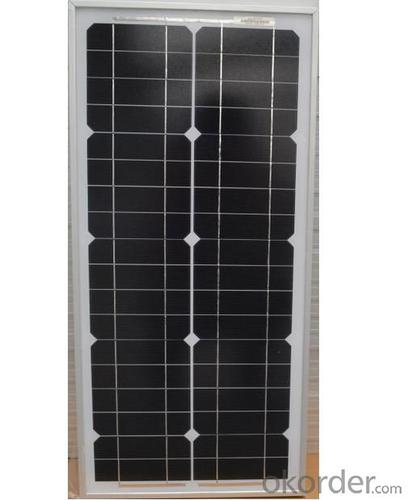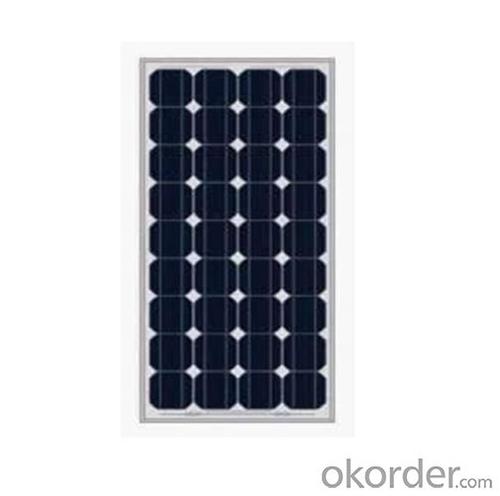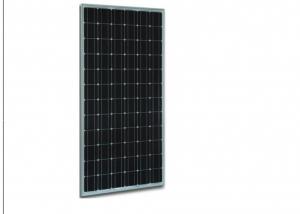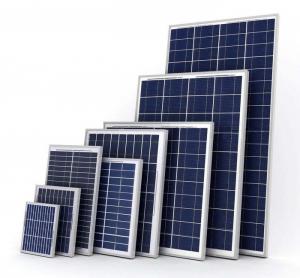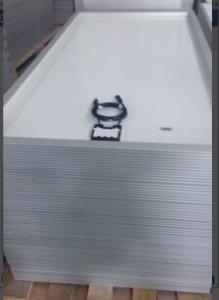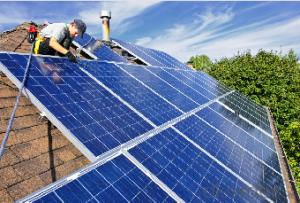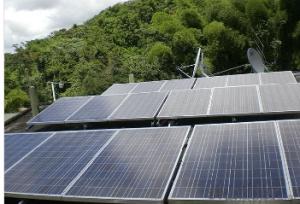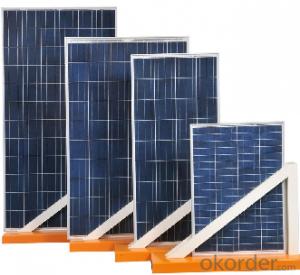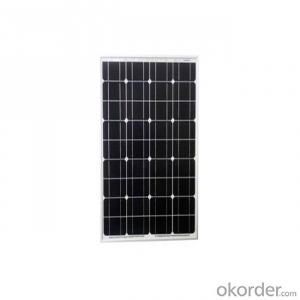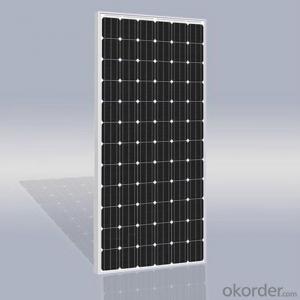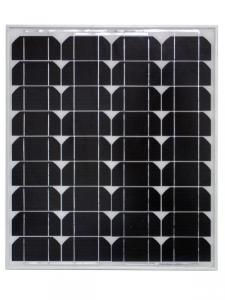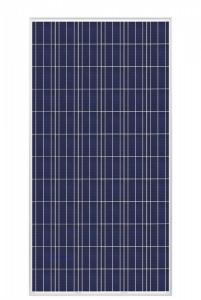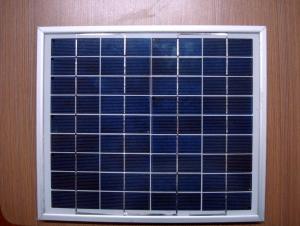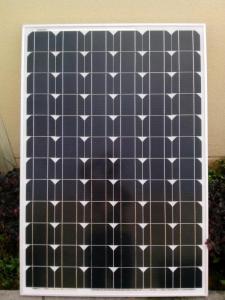Mono panel HSPV30Wp-36M
OKorder Service Pledge
Quality Product, Order Online Tracking, Timely Delivery
OKorder Financial Service
Credit Rating, Credit Services, Credit Purchasing
You Might Also Like
HSPV30Wp-36M
futures
※ High efficiency crystalline silicon cells.
※ High transmission low iron tempered glass, strong mechanical resistance.
※ Standard waterproof junction box, with bypass diode.
※ High endurance to different atrocious weather
※ IEC 61215 and IEC61730 Class A certificates
※ Conformity to CE.
※ Applicable to residential roof top systems, On-grid/Off-grid utility, commercial system.
※ 10-year quality guarantee and 10 - 25-year power output guarantee.

- Q: we are trying to reduce a solar panel from 9 volts to 3 volts. What do we need to make this work...
- By hitting #x2F;3 of it with rocks! See what I did there!
- Q: Can I install my 2v solar panel straight to battery to charge the battery on my 989 ford ranger?
- You would need a inverter which transfer AC to DC. then you can connect it to your battery. You also have to check is your battery able to take energy coming from inverter. This might be little but tricky. Check the energy output and battery Voltage before testing.
- Q: Can solar panels be installed on a carport structure?
- Yes, solar panels can be installed on a carport structure. In fact, carports are an ideal location for solar panel installations as they provide ample space and can help maximize the energy production potential. Additionally, solar carports offer the added benefit of providing shade and protection for vehicles while generating clean and renewable energy.
- Q: So how does a solar panel work? Where does the energy get stored in? How much does one cost for a small 2 family home? How much money would we save on electricity?
- These are all good questions but they are open Items. Solar panels work by the reaction of certain elements upon exposure to sunlight.The amount of power generated is Dependant on at least three factors; The size of the solar panel, the type of solar cells used (The specific element and the cell construction) and the amount of sunlight to which the panels are exposed. The answers to these questions may indicate how much you will save (How much does your electricity now cost per KWH and how much do you use in the two family house} and if solar is feasible in your location. You should probable contact at least three of the local companies that do solar installations and listen (with a cynical ear) to their presentations. They are all trying to sell you their product but you after listening to more than one presentation can sort through the BS. Also you might contact your present power provider. They should be able to give you some good advice on alternative energy availability. Good Luck DOCSRG
- Q: How can I know the right type of solar panel to choose for my small village house in Africa?
- The power output of a solar panel uses a formula to determine kilowatts produced per hour per square meter per day. This calculation is important because, if you plan to install a solar power system for your home, you will want to know how many solar panels will be needed. To calculate solar power requirements correctly, you need to gather the data that is needed for the calculation. First you have to find the average amount of solar radiation available for your area. You can use a solar radiation chart. This can range from a 4 to a 7 depending on the area you live in. Write the number down on a piece of paper and indicate it with the letters RA. Next is determine the amount of electricity that you use daily. Add the kilowatt-hours used per month from your utility bill. Multiply this number by ,000 to get the watt hours in a month. Divide the total by 30 for the amount of electricity you use daily. Write this number down and indicate it with the letters DE. Determine the percentage of your home that you want to power with the solar power system. Write this number down and indicate it with the letter P. Determine the system inefficiency factor for the solar power system. You should be able to find this on the brochure for the system or from the manufacturer's web site. Write this number down and indicate it by the letter I. Determine the power or yield that is required for your home. Use the equation P = I x (DE x P) / RA to find the power requirements in kWh. Divide the number from Step 5 by the peak wattage for a single solar panel to determine the number of panels you will need for your home. Goodluck! :)
- Q: Im curious because I read about a boy who invented a 3d solar panel, using a pyramid he designed a solar panel that collects light more efficiently. Now I have a question. Why cant I design a solar panel that takes adventage of convex and concave mirror's and use a surface that collects light and then focus's the suns energy into a beam and take the beam into a chamber where the solar panels are sitting and surround them with mirrors as well, so any light not obsorbed by one particular spot is reflected to another area for reabsorbtion. I know solar panels dont absorb light but perhaps that will allow more light to create the effects it needs.
- I okorder /
- Q: want to add solar panels to manufactured home, and we get a lot of snow up here in the NW. Wondering if it would interfer with the roof load.
- The okorder if you would like some ideas on how to do this.
- Q: i am very much interested in making a solar panel, my problem is where i can acquire the main components in order to build it, i am staying here in abu dhabi UAE i'm always searching on the internet for shops that can provide me a DIY kit but i did not find one, i need somebody who knows where i can get these things, please let me know.
- I okorder
- Q: Can solar panels be installed on a museum or cultural institution?
- Yes, solar panels can be installed on a museum or cultural institution. Installing solar panels can help these institutions reduce their energy costs and carbon footprint, while also showcasing their commitment to sustainability and environmental stewardship. Additionally, solar panels can be installed on rooftops or in nearby open spaces, minimizing any aesthetic impact on the museum's architecture or surrounding areas.
- Q: Is this true in a dc system? What if my battery current is negative?
- Current rating of a piece of supply equipment is the maximum current that can be supplied. you may have the capacity to supply 8.75 amps total but your load may draw a lot less than that. like if you fill your cup from a bottle. the bottle may hold 5 gallons but you only use one quarter of a pint to fill the cup. I hope that makes some kind of sense.
Send your message to us
Mono panel HSPV30Wp-36M
OKorder Service Pledge
Quality Product, Order Online Tracking, Timely Delivery
OKorder Financial Service
Credit Rating, Credit Services, Credit Purchasing
Similar products
Hot products
Hot Searches
Related keywords
